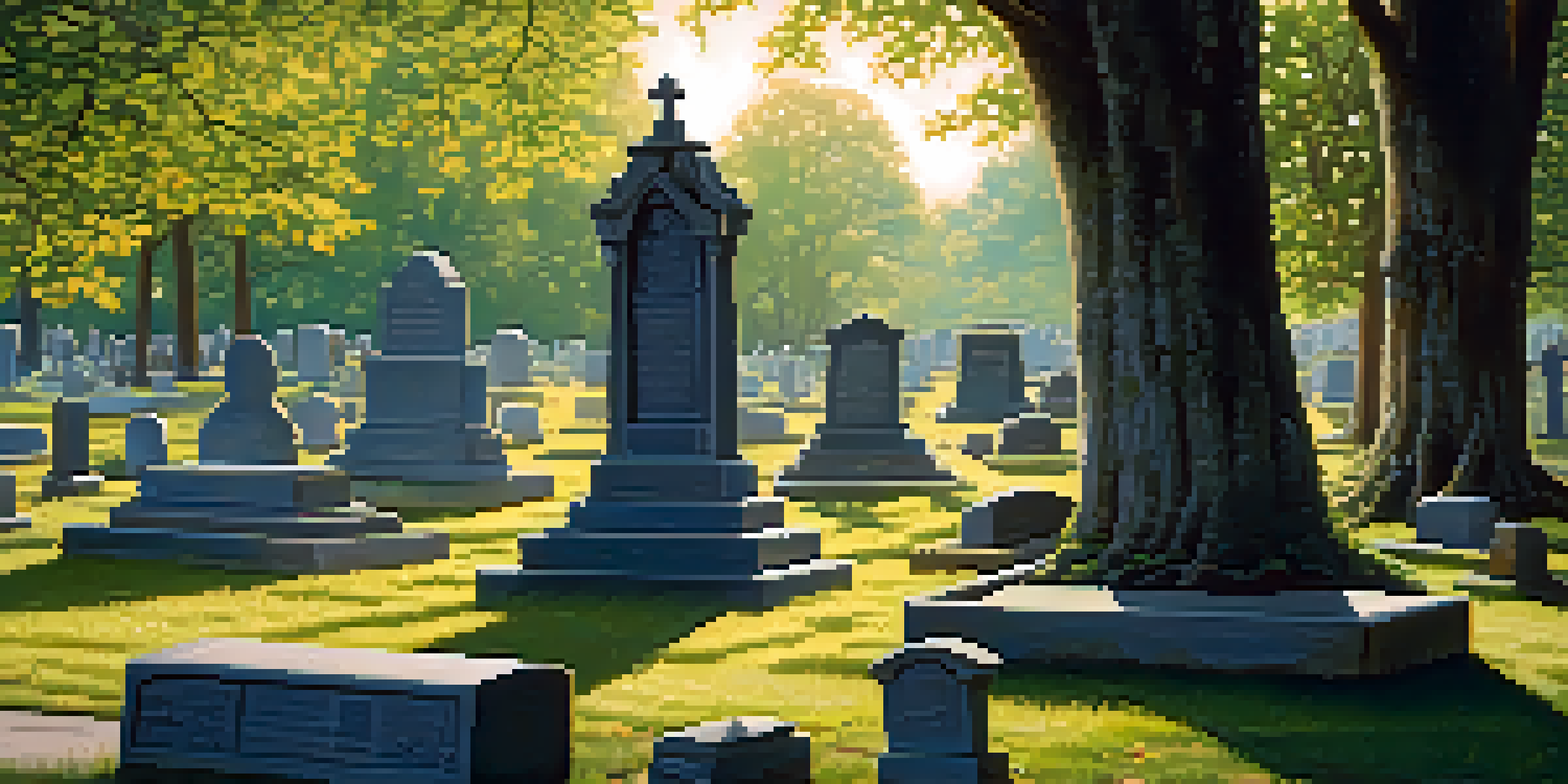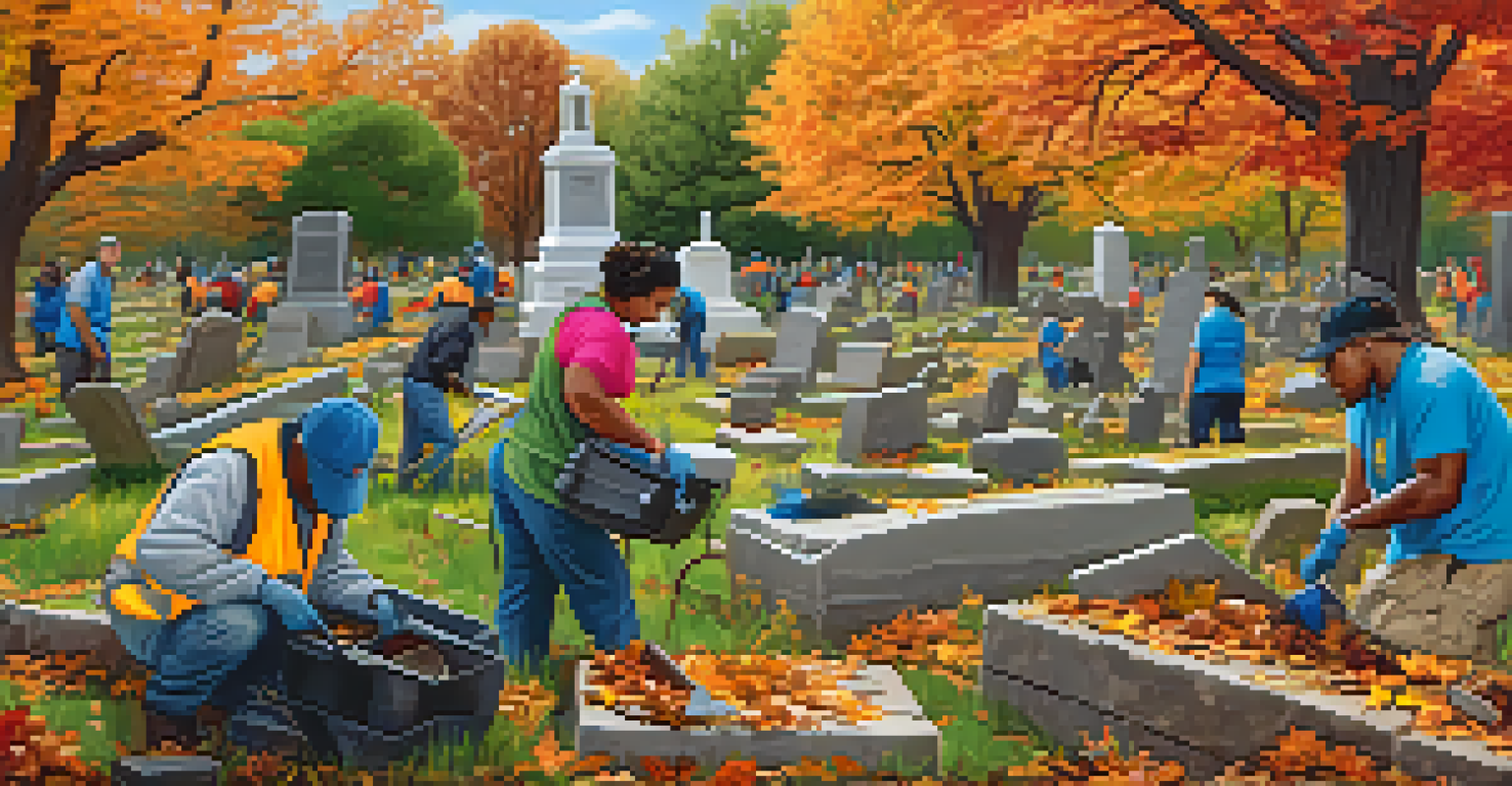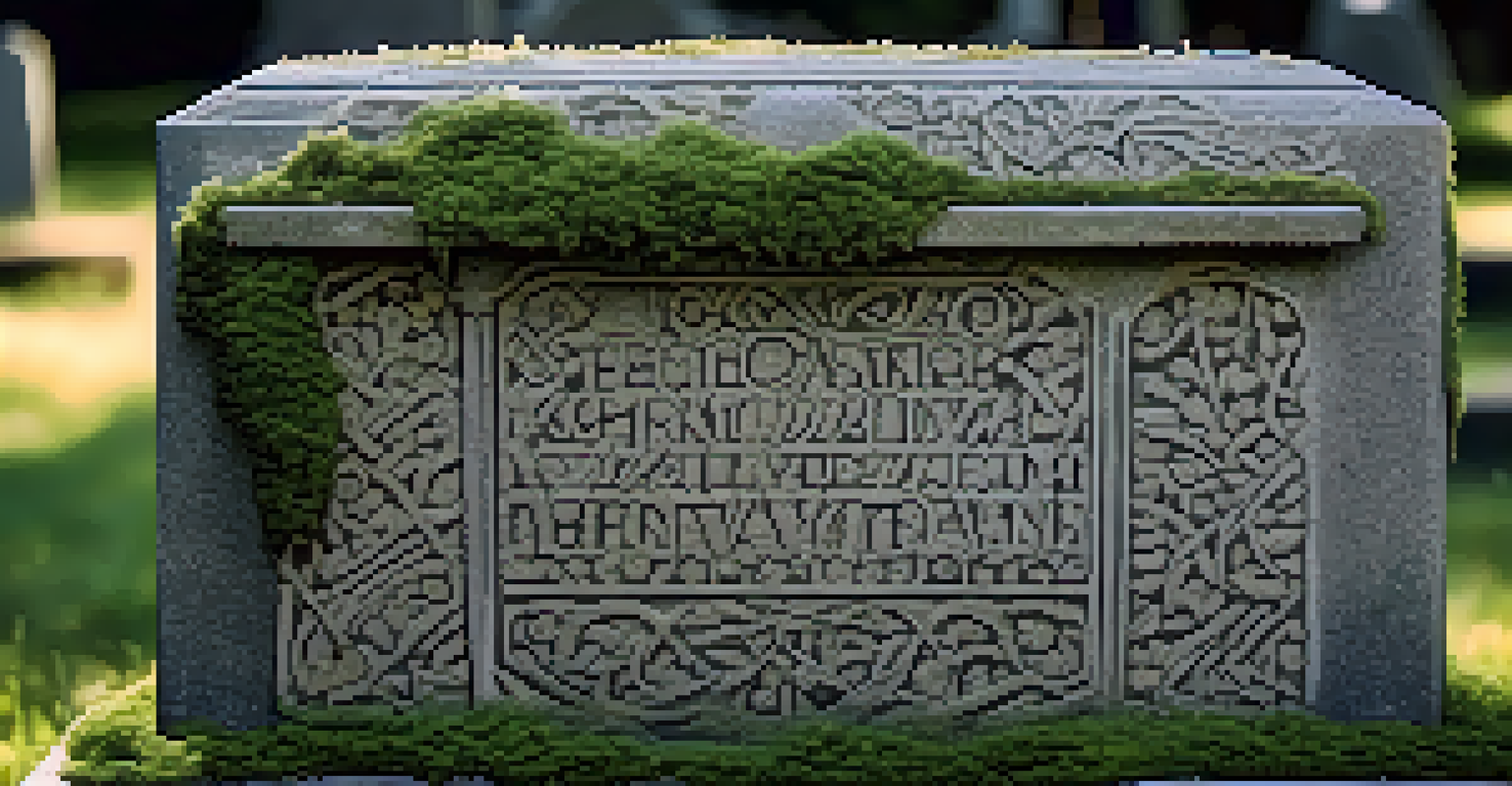Preservation Efforts for Detroit's Historic Cemeteries

Understanding the Importance of Detroit's Historic Cemeteries
Detroit's cemeteries are not just resting places; they are vital historical landmarks. They tell the stories of the city's rich past, including its cultural diversity and social evolution. Each gravestone and monument represents lives that shaped the community, making preservation efforts essential for future generations.
Preservation is a form of stewardship, and stewardship is a responsibility we owe to future generations.
In a city that has seen significant changes over the years, these cemeteries serve as reminders of both triumphs and struggles. They house the final resting places of influential figures whose contributions helped build Detroit into what it is today. By preserving these sites, we honor their legacies and educate the public about our shared history.
Moreover, historic cemeteries often reflect broader social trends, such as immigration and industrialization. Understanding their context helps us appreciate the intricate tapestry of Detroit's history. This makes their preservation not just a local concern but a vital aspect of American heritage.
Current Challenges Facing Preservation Initiatives
Despite their importance, Detroit's historic cemeteries face numerous challenges that threaten their preservation. Issues such as neglect, vandalism, and urban development pose significant risks to these sites. Many cemeteries have fallen into disrepair, with crumbling headstones and overgrown landscapes that diminish their historical value.

Funding is another critical obstacle. Many preservation projects rely on donations and grants, making sustainability difficult. With limited resources, it's challenging to address urgent repairs or engage in long-term conservation efforts. This financial strain can make it feel like an uphill battle for preservationists.
Historic Cemeteries as Cultural Landmarks
Detroit's historic cemeteries serve as vital historical landmarks that reflect the city's rich past and cultural diversity.
Additionally, raising public awareness about the significance of these burial grounds is vital. Many people may not realize the cultural and historical importance of these sites, leading to a lack of community involvement. Without widespread support, preservation initiatives may struggle to gain the traction needed to effect real change.
Community Involvement in Preservation Efforts
Community involvement is crucial for the success of preservation efforts in Detroit's cemeteries. Local organizations and volunteers play a significant role in restoration projects, often bringing much-needed manpower and enthusiasm. Events such as cleanup days and educational tours help foster a sense of ownership and pride among residents.
History is not a burden on the memory but an illumination of the soul.
Engagement with the community not only aids in physical preservation but also helps to revitalize interest in local history. When residents participate in these efforts, they become more connected to their surroundings and the stories embedded within them. This connection can lead to increased advocacy for protecting these historic sites.
Moreover, educational programs in schools can inspire the next generation to appreciate and respect these cemeteries. By teaching students about the importance of local history, we can cultivate a culture of preservation that continues to thrive. This grassroots involvement is essential for ensuring that these cemeteries are preserved for years to come.
The Role of Technology in Cemetery Preservation
Technology is playing an increasingly important role in the preservation of Detroit's historic cemeteries. Digital tools, such as 3D scanning and mapping, allow for the accurate documentation of headstones and cemetery layouts. This data can be invaluable in restoration efforts, helping to ensure that historical integrity is maintained.
Moreover, social media platforms have become powerful tools for raising awareness and garnering support. Organizations can share their preservation stories and recruit volunteers through engaging posts and campaigns. This broader reach helps to connect with individuals who may not have been aware of the issues facing these cemeteries.
Community Engagement Drives Preservation
Active community involvement and education are crucial for successful preservation efforts, fostering a sense of ownership and pride among residents.
Additionally, online databases that catalog burial records can aid genealogists and historians alike. By making information more accessible, technology not only assists in preservation but also enriches our understanding of the past. This fusion of tradition and innovation fosters a more comprehensive approach to cemetery preservation.
Successful Preservation Projects in Detroit
Several successful preservation projects in Detroit serve as beacons of hope for the future of historic cemeteries. For instance, the restoration of the historic Elmwood Cemetery has garnered attention for its comprehensive approach to revitalizing the site. Through community engagement and funding efforts, significant repairs have been made, showcasing what is possible with collective action.
Another noteworthy project is the Friends of Detroit's Historic Cemeteries initiative, which focuses on education and volunteerism. This group organizes events that not only clean up cemeteries but also educate participants about the historical significance of these sites. Their work illustrates the power of community-driven efforts in making a tangible impact.
These success stories encourage other preservation initiatives by demonstrating that collaboration can yield impressive results. They serve as a reminder that while challenges exist, the commitment of individuals and organizations can lead to meaningful change. By learning from these examples, more projects can be launched to protect Detroit's historic cemeteries.
The Importance of Historical Research in Preservation
Historical research is a cornerstone of effective cemetery preservation. Understanding the historical context of each site allows preservationists to make informed decisions about restoration efforts. This involves researching the individuals buried there, the significance of the cemetery, and any notable events associated with it.
Furthermore, historical research can uncover lost stories and connections, enriching the narrative of the cemetery. By documenting these findings, we can create educational resources that inform the public and enhance appreciation for these sites. This research not only aids in preservation but also fosters a deeper connection to our collective history.
Technology Enhances Preservation Efforts
Utilizing technology, such as digital documentation and social media, significantly aids in the preservation and awareness of Detroit's historic cemeteries.
Additionally, collaborating with historians and local experts can enhance preservation initiatives. Their insights can guide restoration efforts and ensure that the historical integrity of the cemeteries is maintained. This collaborative approach can lead to more robust and informed preservation strategies.
Looking Forward: The Future of Cemetery Preservation in Detroit
As we look to the future, the preservation of Detroit's historic cemeteries remains a critical concern. Ongoing efforts will require adaptability and innovation to overcome prevalent challenges. By leveraging technology, community involvement, and historical research, we can create sustainable preservation models that thrive.
Moreover, fostering partnerships between local government, non-profits, and community members can amplify these initiatives. Collaborative efforts can lead to increased funding opportunities and broader support for preservation projects. This united front is essential for ensuring these cemeteries receive the attention they deserve.

Ultimately, the future of cemetery preservation in Detroit hinges on our collective commitment to honoring the past. By recognizing the significance of these sites and actively participating in their care, we can ensure that they remain vital parts of our community. Together, we can create a legacy that reflects the rich history of Detroit for generations to come.